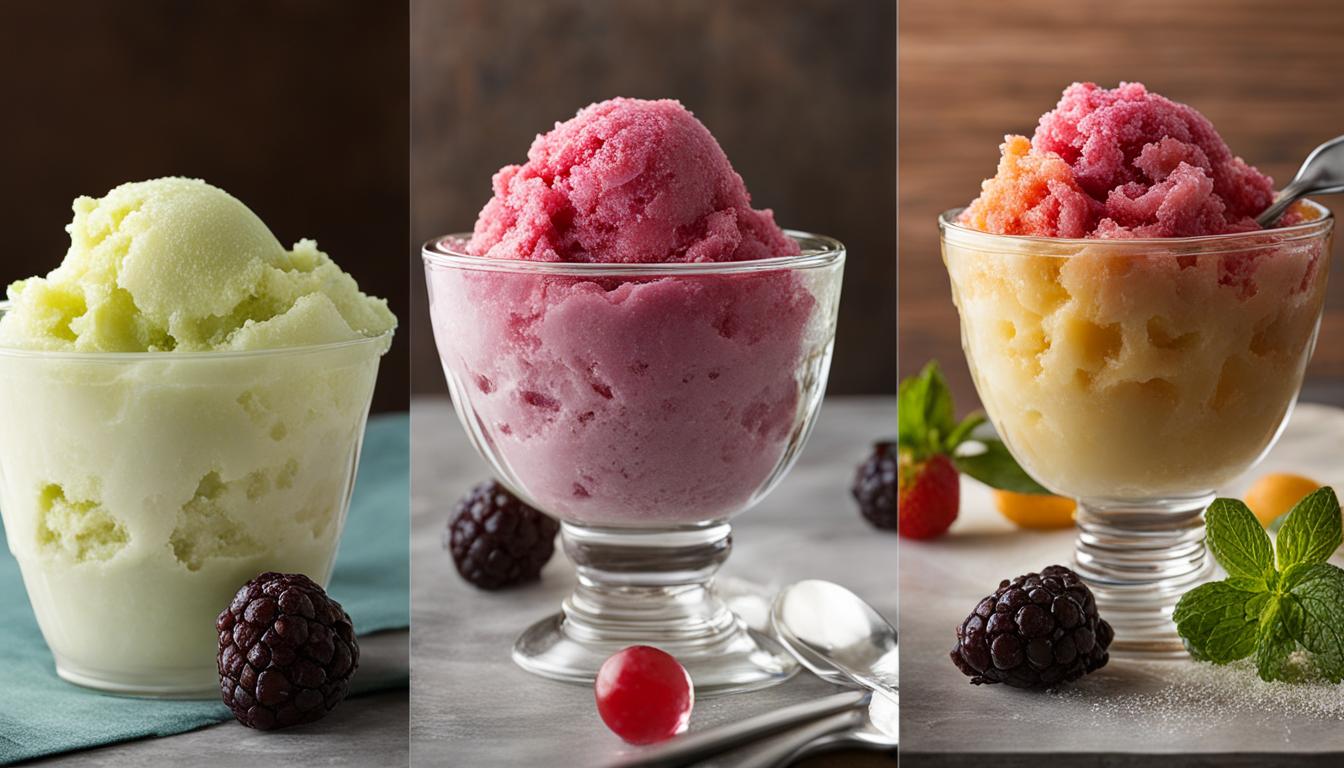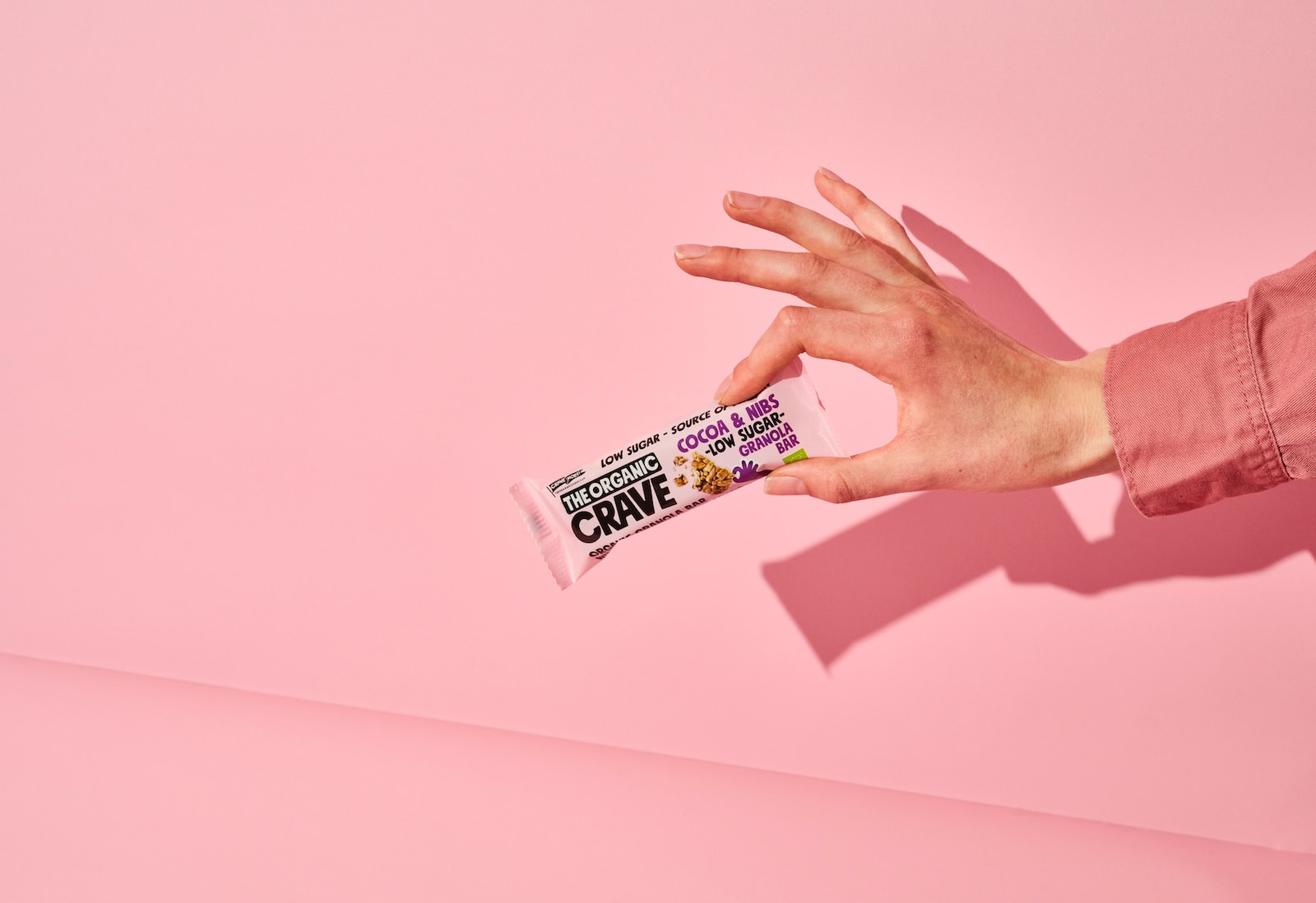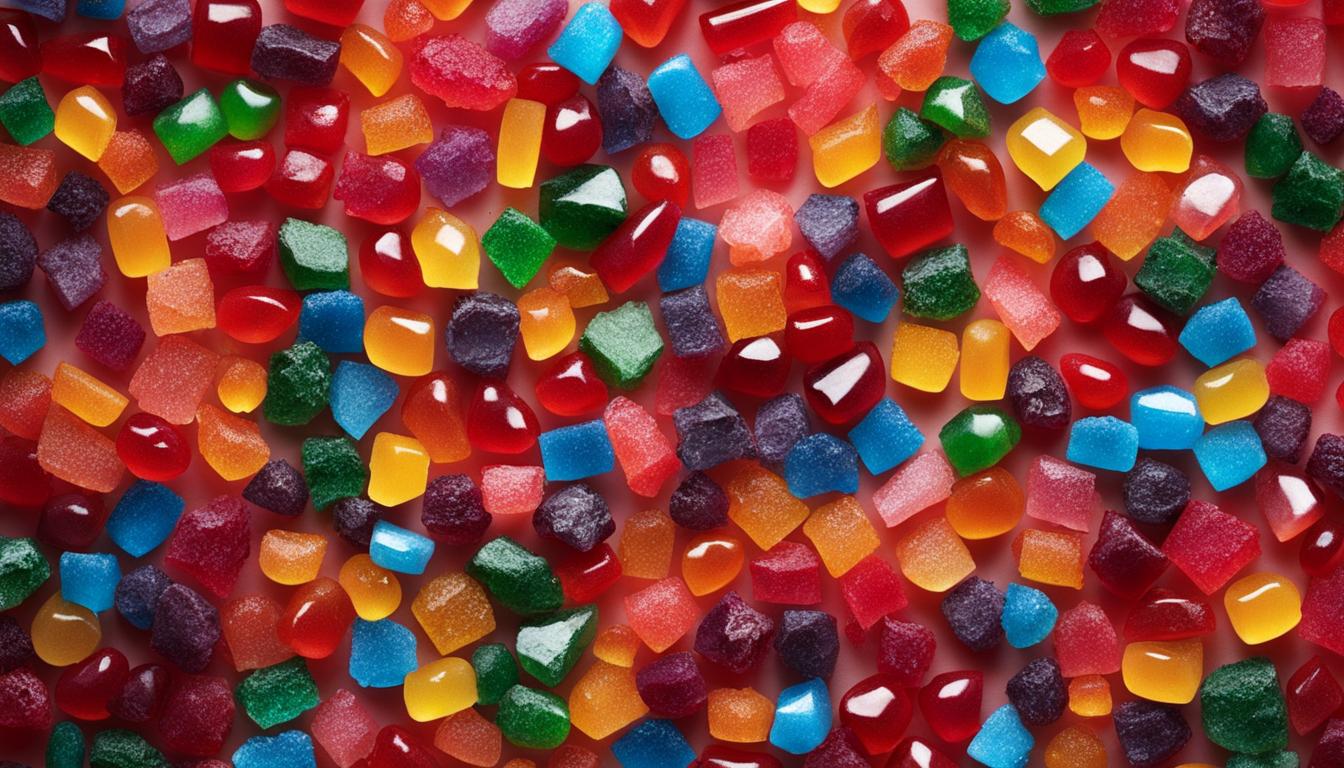Gelato and granita are two popular Italian frozen treats that offer unique flavors and textures. While they may seem similar, there are distinct differences between the two. In this article, we will explore the differences between gelato and granita, including their ingredients, texture, and taste.
When comparing gelato and granita, it’s important to understand the key factors that set them apart. Gelato is a dairy-based churned dessert with a dense and decadent texture. It is made with a base of cream, milk, and sugar, resulting in a rich and creamy treat. On the other hand, granita is a non-dairy frozen dessert that is made by freezing a mixture of sugar, water, and flavorings and then scraping it to create a granular texture.
Another difference between gelato and granita is their taste. Gelato has a wide variety of flavors to choose from, ranging from classic options like chocolate and vanilla to unique combinations like pistachio and stracciatella. Granita, on the other hand, often features fruit flavors like lemon, orange, and almond. These flavors are more concentrated in granita, giving it a refreshing and icy taste.
The texture of gelato and granita is also distinct. Gelato has a dense and smooth texture, similar to ice cream but with less air incorporated. It melts in the mouth and has a luxurious mouthfeel. Granita, on the other hand, has a granular texture due to the scraping process, similar to shaved ice or snow cones. It provides a refreshing and icy sensation.
In conclusion, gelato and granita may both be Italian frozen treats, but they have clear differences. Gelato is a creamy and rich dessert with a wide range of flavors, while granita is a refreshing and icy treat with concentrated fruit flavors. Whether you prefer the smoothness of gelato or the granular texture of granita, both treats are worth trying and enjoying on a sunny day.
Key Takeaways:
- Gelato is a dairy-based churned dessert with a rich and dense texture.
- Granita is a non-dairy frozen dessert with a granular texture, similar to shaved ice.
- Gelato has a wide variety of flavors, while granita often features fruit flavors.
- Gelato has a dense and smooth texture, while granita has a granular texture.
- Both gelato and granita are delicious frozen treats to enjoy on a hot day.
What is Gelato?
Gelato is a popular Italian frozen treat that shares similarities with traditional ice cream but has its own unique qualities. With its lower butterfat content and reduced air incorporation during the churning process, gelato offers a rich and dense texture that sets it apart from ice cream. This delightful dessert comes in a wide variety of flavors, from classic options like chocolate and vanilla to more adventurous choices like pistachio and stracciatella.
What makes gelato truly special is its smooth and creamy consistency. Unlike ice cream, which freezes solidly, gelato remains softer and more pliable, allowing the flavors to come through with each spoonful. This makes gelato a favorite choice for those who prefer a more indulgent and luxurious frozen treat. Whether enjoyed on its own or as a base for creative desserts like affogato or gelato sandwiches, gelato is a beloved Italian delicacy and a popular choice for ice cream enthusiasts around the world.
What is Granita?
Granita is a refreshing frozen dessert that is popular in Sicily. It is made by freezing a mixture of sugar, water, and flavorings on a sheet or in a pan, and then scraping it to create a granular texture. This unique texture sets granita apart from other frozen treats like shaved ice or snow cones. The process of scraping the frozen mixture creates small ice crystals, giving granita its characteristic grainy consistency.
Granita flavors are often inspired by the abundant fruit found in Sicily. Popular flavorings include lemon, orange, almond, and coffee. These flavors can be enjoyed on their own or combined to create unique combinations. The concentrated flavor of granita makes it a refreshing and flavorful dessert, especially on hot summer days.
Granita vs Shaved Ice
While granita may appear similar to shaved ice, there are some key differences. Shaved ice is made by shaving a block of ice into fine, delicate flakes. The ice is then flavored with syrups that are poured over the ice. Shaved ice has a lighter and fluffier texture compared to granita, which has a more granular and icy consistency. Additionally, shaved ice typically has a milder flavor compared to the bold and concentrated flavors found in granita.
Unlike shaved ice, which is often served in a cup or cone, granita is traditionally served in a bowl or cup. It can be enjoyed on its own or topped with a dollop of whipped cream for added richness. Some people also enjoy granita with a side of biscotti or other cookies for a contrasting texture.
Table: Granita vs Shaved Ice
| Granita | Shaved Ice |
|---|---|
| Granular texture | Delicate flakes |
| Concentrated flavors | Milder flavor |
| Served in a bowl or cup | Served in a cup or cone |
| Often topped with whipped cream | Typically served with flavored syrups |
Gelato vs Granita: Dairy vs Non-Dairy
One of the main differences between gelato and granita is the presence of dairy. Gelato is made with a base of dairy, usually a combination of cream, milk, and sugar. This gives it a creamy and rich texture. On the other hand, granita is a non-dairy frozen treat that is made with a mixture of sugar, water, and flavorings. It has a lighter and more refreshing texture compared to gelato.
Gelato, with its dairy base, has a smooth and dense consistency. The creamy texture is achieved by incorporating less air during the churning process, resulting in a more decadent dessert. On the other hand, granita has a granular texture due to the scraping process. It is not as smooth as gelato or sorbetto but still offers a refreshing and icy experience.
When it comes to flavor varieties, gelato and granita both have a wide range of options to choose from. Gelato flavors can range from traditional classics like chocolate and vanilla to unique and inventive combinations like pistachio and stracciatella. Granita flavors often include fruit-based options like lemon, orange, and almond. Both gelato and granita allow for creativity in flavor combinations, offering a delightful taste experience.
| Gelato | Granita | |
|---|---|---|
| Presence of Dairy | Yes | No |
| Texture | Smooth and dense | Granular |
| Flavor Variety | Wide range, including traditional and unique flavors | Fruit-based flavors, refreshing and bright |
Whether you prefer the creamy richness of gelato or the light and refreshing texture of granita, both of these Italian frozen treats offer unique and delicious experiences. Gelato’s dairy base provides a creamy and smooth mouthfeel, while granita’s non-dairy nature gives it a lighter and icy consistency. Both gelato and granita can be enjoyed in various flavors and are a delightful way to cool down and satisfy your sweet tooth.
Texture and Consistency
Gelato and granita have distinct textures and consistencies that contribute to their unique eating experiences. Gelato, with its dense and creamy texture, is similar to ice cream but with a smoother mouthfeel. It has less air incorporated during the churning process, resulting in a richer and more decadent dessert. Unlike ice cream, gelato doesn’t freeze as solidly and has a softer and silkier consistency. This allows the flavors to be more pronounced and the gelato to melt more quickly on the palate.
On the other hand, granita has a granular texture that sets it apart from gelato. The freezing and scraping process used to make granita creates a texture similar to shaved ice or snow cones. It has a slightly icy and refreshing consistency, making it perfect for hot summer days. While not as smooth as gelato, granita still offers a delightful mouthfeel and allows for a more intense flavor experience.
It’s important to note that sorbetto, another Italian frozen treat, shares similarities with both gelato and granita. Like granita, sorbetto has a granular texture but is smoother due to a slower churning process. It doesn’t contain dairy like gelato, making it a refreshing and fruity option for those who are lactose intolerant or avoiding dairy products.
Table: Texture and Consistency Comparison
| Gelato | Granita | Sorbetto |
|---|---|---|
| Dense and creamy | Granular and icy | Granular and smooth |
| Soft and silky | Refreshing | Refreshing |
| Less air incorporated | Scraped texture | Slow churning process |
In summary, gelato offers a smooth and creamy texture, while granita provides a granular and refreshing mouthfeel. Both frozen treats offer unique textural experiences that enhance the enjoyment of their respective flavors.
Gelato and Granita: A Delightful Array of Flavor Varieties
Gelato and granita are beloved Italian frozen treats that offer a wide range of flavor options to satisfy every palate. Whether you prefer the creamy richness of gelato or the refreshing icy texture of granita, both desserts showcase the creativity and diversity of Italian gastronomy.
Gelato Flavors
Gelato is renowned for its vast array of flavors, ranging from timeless classics to innovative combinations. Traditional options like chocolate, vanilla, and strawberry are always popular choices, providing a familiar and comforting indulgence. For those seeking a more adventurous experience, gelaterias also offer unique flavors such as pistachio, hazelnut, tiramisu, and stracciatella. These flavors intertwine to create a symphony of taste, delighting gelato enthusiasts around the world.
Granita Recipes
Granita, on the other hand, is characterized by its vibrant fruit flavors and invigorating texture. Lemon, orange, almond, and coffee are among the most popular flavorings used in this refreshing delight. Sicilian granita, in particular, showcases the island’s abundance of citrus fruits and Mediterranean influences. It is often enjoyed as a standalone dessert or paired with whipped cream for an added indulgence.
| Gelato Flavors | Granita Recipes |
|---|---|
| Chocolate | Lemon |
| Vanilla | Orange |
| Strawberry | Almond |
| Pistachio | Coffee |
The gelato flavors and granita recipes provide a delightful contrast that caters to different tastes and preferences. Whether you savor the smooth, creamy texture of gelato or the icy, granular sensation of granita, you are sure to discover a flavor combination that captivates your senses.
Gelato vs Granita: Churning Process
When it comes to the churning process, gelato and granita have distinct approaches that contribute to their unique textures and mouthfeel. Understanding how each frozen treat is churned can help you appreciate the differences between them.
The Churning Process of Gelato
Gelato is churned at a slower speed compared to ice cream and sorbetto. This slower churning process incorporates less air into the gelato mixture, resulting in a denser and smoother texture. The slower churn also helps create a creamy and rich dessert that is a delight to savor.
The Churning Process of Granita
In contrast, granita does not undergo a churning process like gelato. Instead, it is made by freezing a mixture and then scraping it, creating a granular texture similar to shaved ice. The absence of churning contributes to the unique mouthfeel of granita, giving it a refreshing and icy consistency.
Both the slow churning of gelato and the scraping technique of granita play significant roles in shaping their respective textures. Gelato’s denser, smoother churned texture contrasts with granita’s granular, icy texture, offering delightful choices for frozen treat enthusiasts.
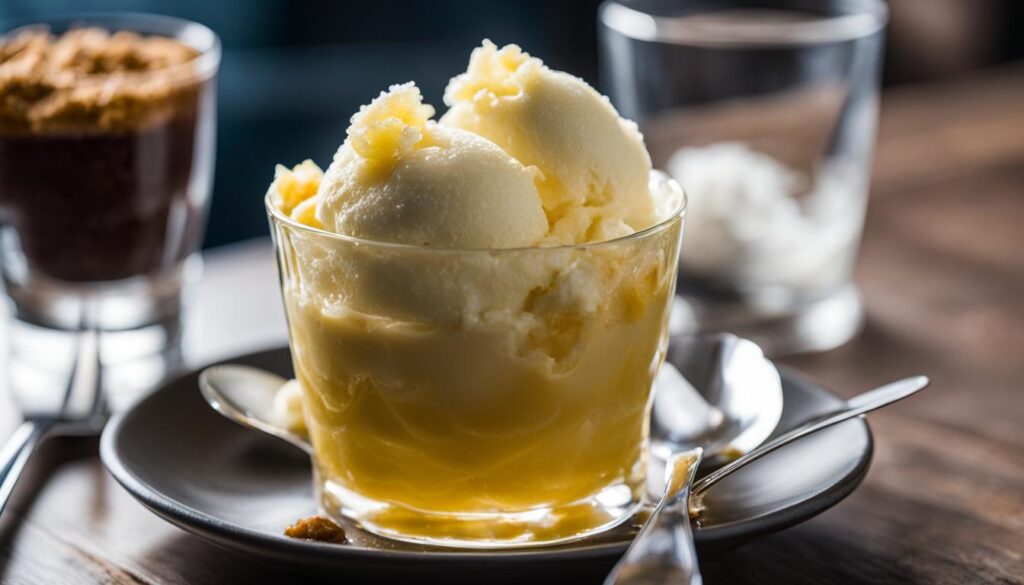
Gelato vs Sorbetto: A Churning Comparison
| Gelato | Sorbetto | |
|---|---|---|
| Churning Process | Slower churn, incorporating less air | Faster churn, creating a lighter texture |
| Texture | Denser and creamier | Light and refreshing |
| Main Ingredient | Dairy (cream and milk) | Fruit juice or puree |
| Flavor Profiles | Wide variety, including both classic and unique options | Mainly focused on fruit flavors |
Comparing gelato to sorbetto further highlights the significance of the churning process. While gelato’s slow churning creates a dense and creamy dessert, sorbetto’s faster churn results in a lighter and more refreshing texture. Additionally, gelato’s main ingredient is dairy, providing a rich base, while sorbetto’s main ingredient is fruit juice or puree, creating a burst of fruity flavors. These differences in churning and ingredients contribute to the distinctive characteristics of gelato and sorbetto.
History and Origins
The history of gelato and granita is deeply rooted in Italian culture, with both frozen treats having unique origins and backgrounds.
Gelato, which translates to “frozen” in Italian, can be traced back to the 16th century in Florence, Italy. It was created by the architect and artist Bernardo Buontalenti, who presented it as a royal gift to the Medici family. Gelato quickly gained popularity throughout Italy and became a staple of Italian cuisine. Today, gelato is known for its creamy texture and wide range of flavors, making it a beloved dessert worldwide.
Granita, on the other hand, has its origins in the sunny island of Sicily. This refreshing frozen treat is believed to have been created around the 4th century B.C. by the ancient Sicilians. The original granita recipe consisted of crushed ice mixed with fruit juices or sweetened water. Over the centuries, granita evolved, and the Sicilians began adding flavors like lemon, orange, almond, and coffee. Today, granita remains a popular summer treat in Sicily, showcasing the island’s culinary heritage.
Gelato vs Italian Ice
| Gelato | Italian Ice |
|---|---|
| Gelato is a creamy, dense frozen dessert made with a base of dairy (usually cream and milk). | Italian ice is a lighter, fruit-based frozen dessert made with water, sugar, and flavorings. |
| It has a richer texture and a lower freezing point, allowing flavors to be more pronounced. | Italian ice has a more icy texture and a higher freezing point, resulting in a lighter mouthfeel. |
| Gelato is churned at a slower speed, incorporating less air and giving it a denser consistency. | Italian ice is not churned, resulting in a smoother texture akin to shaved ice. |
| Gelato flavors range from traditional options like chocolate and vanilla to unique combinations like stracciatella and pistachio. | Italian ice flavors are typically fruity, with popular choices including lemon, cherry, and watermelon. |
While both gelato and Italian ice are delicious frozen treats, their differences in ingredients, texture, and flavors make them distinct Italian desserts.
Popularity and Availability
Gelato and granita are both beloved Italian frozen treats, but their popularity and availability differ. Gelato, with its creamy texture and wide variety of flavors, has gained popularity not only in Italy but also worldwide. It can be found in gelaterias and ice cream shops in many countries, allowing people to indulge in its deliciousness. Whether you’re in Rome, New York, or Tokyo, you’re likely to find a gelato shop where you can satisfy your sweet tooth.
On the other hand, granita is more regionally popular, especially in Sicily. While you may not find granita shops as easily outside of Italy, it is still enjoyed by locals and tourists in Sicily. You can find it in certain Italian restaurants or specialty shops in other parts of the world. However, its availability may be limited compared to gelato.
Enjoying Gelato and Granita
Gelato and granita are both delightful Italian frozen treats that offer a range of flavors and textures to satisfy your sweet tooth. Whether you prefer the smooth and creamy richness of gelato or the refreshing icy granular texture of granita, there are plenty of ways to enjoy these delectable desserts.
Gelato:
When it comes to enjoying gelato, there are several options to choose from. You can savor the flavors and indulge in the creamy texture by enjoying a scoop or two in a cup or cone. Gelato is also a versatile treat that can be used as a base for delightful desserts like affogato, where a shot of espresso is poured over a scoop of gelato, creating a perfect blend of warm and cold. Additionally, you can try making gelato sandwiches by sandwiching a scoop of gelato between two cookies for a delightful combination of flavors and textures.
Granita:
Granita is best enjoyed on a hot summer day when you need a refreshing treat to cool down. This icy dessert is typically served in a bowl or cup, often with a dollop of whipped cream on top. To add some extra flavor and texture, you can pair granita with biscotti or other cookies. The combination of the cold granita and the crunchy cookies creates a delightful contrast and enhances the overall taste experience.
Whether you choose gelato or granita, these Italian frozen treats are sure to satisfy your cravings for something sweet and refreshing. With a wide variety of flavors to choose from, there’s something for everyone to enjoy. So sit back, relax, and treat yourself to a delicious scoop of gelato or a refreshing spoonful of granita.
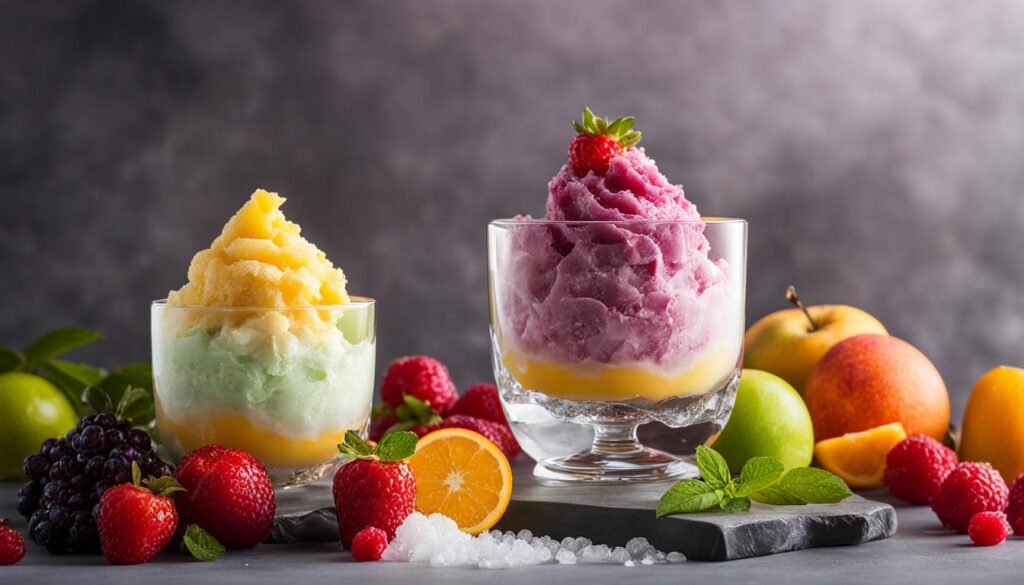
Conclusion
Gelato and granita are both beloved Italian frozen treats with their own unique characteristics. Gelato offers a creamy and rich texture, while granita provides a refreshing and icy consistency. When it comes to flavor, gelato offers a wide variety of options, ranging from classic to inventive, while granita often features fruit flavors with a concentrated taste. Both gelato and granita have their own churning processes, resulting in different textures. Gelato is churned at a slower speed, creating a dense and smooth dessert, whereas granita is frozen and scraped, giving it a granular texture.
While gelato is popular worldwide and can be found in gelaterias and ice cream shops, granita is more closely associated with Sicily and may be less widely available outside of Italy. Gelato is typically enjoyed in cups or cones, allowing for a delightful experience of flavors and textures. On the other hand, granita is best enjoyed in a bowl or cup, especially on hot summer days when a refreshing treat is needed.
Whether you prefer the creamy indulgence of gelato or the icy satisfaction of granita, both desserts have their own unique charm. So the next time you’re craving a frozen delight, why not try both gelato and granita to experience the best of both worlds? You won’t be disappointed by the gelato and granita comparison and the delightful flavors they have to offer.
FAQ
How does gelato differ from granita?
Gelato is a dairy-based frozen dessert with a dense and decadent texture, while granita is a non-dairy frozen treat that is similar to shaved ice or snow cones.
What is gelato?
Gelato is a dairy-based frozen dessert that is similar to ice cream but with a lower butterfat content. It has a richer and more dense texture compared to traditional ice cream.
What is granita?
Granita is a refreshing non-dairy frozen dessert that is made by freezing a mixture of sugar, water, and flavorings and then scraping it to create a granular texture.
What are the differences between gelato and granita?
Gelato is dairy-based, while granita is non-dairy. Gelato has a dense and creamy texture, while granita has a granular texture. Gelato is churned at a slower speed, while granita is not churned.
What flavors are available for gelato and granita?
Gelato comes in a wide variety of flavors, ranging from classics like chocolate and vanilla to unique options like pistachio and stracciatella. Granita flavors often include lemon, orange, almond, and coffee.
How is gelato made and how is granita made?
Gelato is made by churning a mixture of cream, milk, sugar, and flavorings at a slow speed to incorporate less air. Granita is made by freezing a mixture of sugar, water, and flavorings and then scraping it to create a granular texture.
What is the history and origin of gelato and granita?
Gelato has its roots in Italy and is believed to have originated in Florence in the 16th century. Granita is closely associated with Sicily and is believed to have been created around the 4th century.
How popular are gelato and granita?
Gelato is popular not only in Italy but also worldwide. It can be found in gelaterias and ice cream shops in many countries. Granita is popular in Sicily but is less widely available outside of Italy.
How can gelato and granita be enjoyed?
Gelato is typically served in cups or cones and can also be used as a base for desserts. Granita is often served in a bowl or cup and can be paired with biscotti or other cookies.
What are the main differences between gelato and granita?
Gelato is dairy-based, has a dense and creamy texture, and is churned. Granita is non-dairy, has a granular texture, and is not churned.
 Skip to main content
Skip to main content